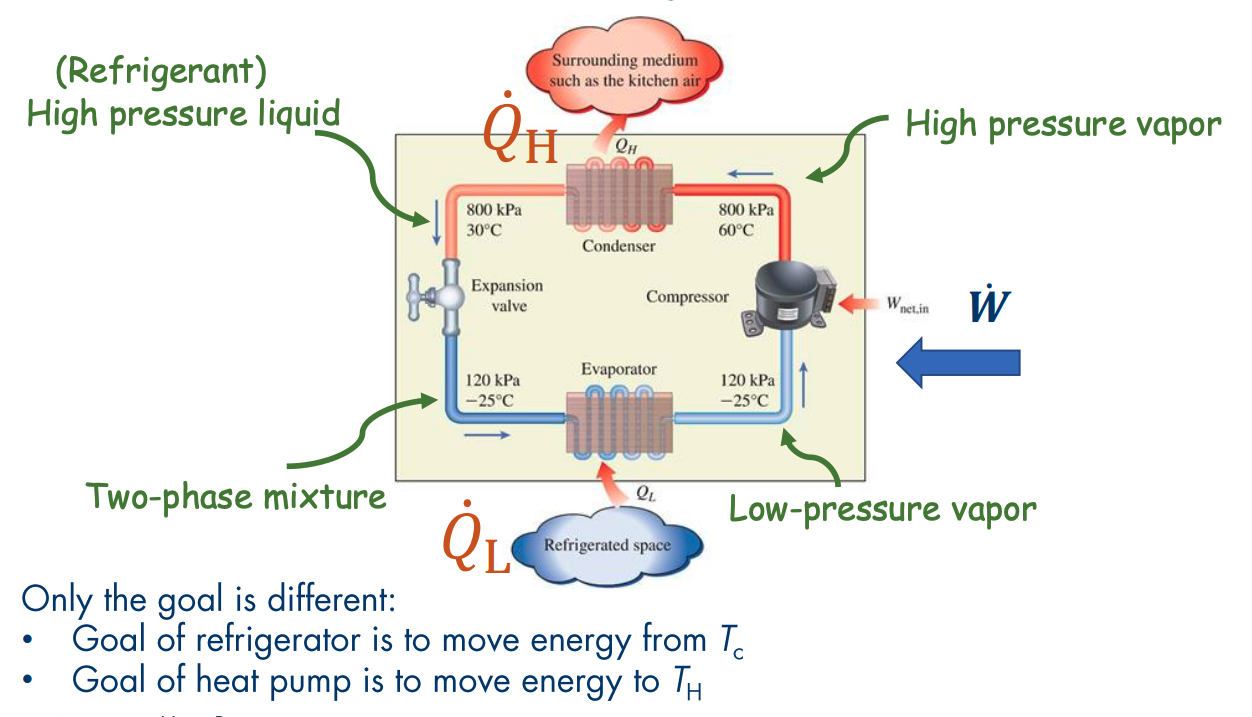Refrigerators and heat pumps move thermal energy from a cold reservoir to a hot reservoir using work. However, they have different goals:
- The goal for a refrigerator is to move energy from
- The goal of a heat pump is to move energy to

In a refrigerator, the working fluid, called the refrigerant, enters the compressor as a vapor. The compressor is powered by electricity, and does work to compress the refrigerant to the condenser pressure. It leaves the compressor at a relatively high temperature, and cools down and condenses as it flows through the coils of the condenser by rejecting heat to the surrounding medium. It then enters a capillary tube (throttle) where its pressure and temperature drop drastically. The low-temperature refrigerant then enters the evaporator, where it evaporates by absorbing heat from the refrigerated space. The cycle is completed as the refrigerant leaves the evaporator and re-enters the compressor.
The objective of a heat pump, however, is to maintain a heated space at a high temperature. This is accomplished by absorbing heat from a low-temperature source, such as well water or cold outside air in winter, and supplying this heat to the high-temperature medium such as a house. An ordinary refrigerator that is placed in the window of a house with its door open to the cold outside air in winter will function as a heat pump since it will try to cool the outside by absorbing heat from it and rejecting this heat into the house through the coils behind it.
Coefficient of Performance
The COP is used to quantify the effectiveness of refrigerators and heat pumps.
For refrigerators:
For heat pumps:
For heat pumps, can be greater than 1, which implies that they can be thermodynamically efficient. In general, the COP increases as is reduced (HP is efficient in temperature climates )